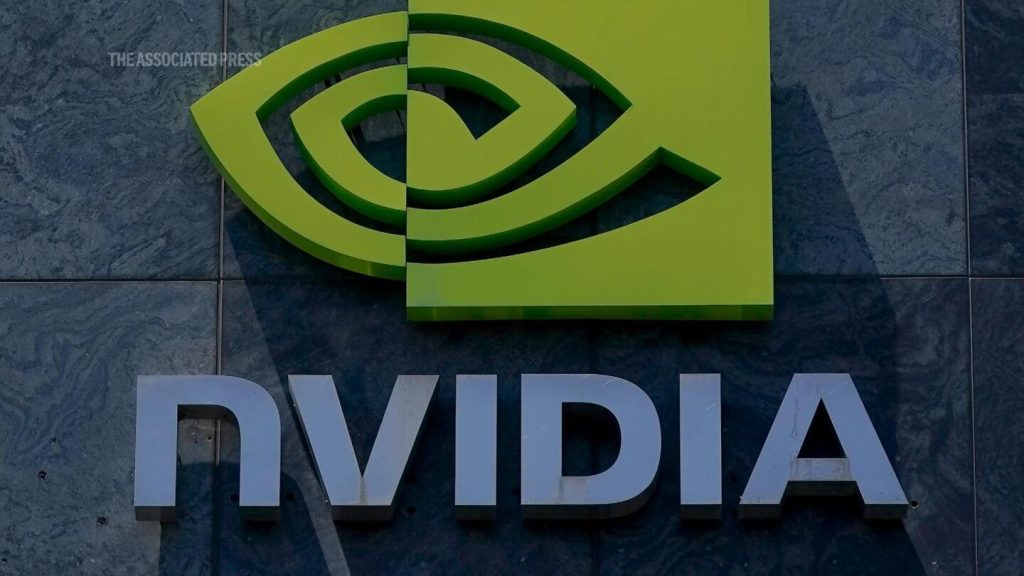Nvidia: Reaching New Heights in the Stock Market

Nvidia recently captured the attention of the financial world by briefly becoming the most valuable company in the S&P 500. Investors estimate its worth to be over $3.2 trillion. This remarkable achievement has everyone wondering just how Nvidia climbed to such heights in a short period.
The company’s rapid rise didn’t happen overnight. It was driven by a combination of technological innovation, strategic acquisitions, and growing demand for artificial intelligence (AI). As Nvidia continues to break new ground, it leaves both seasoned investors and market newcomers in awe. Let’s delve into how this chipmaker reached such impressive stock market success.
Nvidia’s Meteoric Rise
Nvidia recently reached a significant milestone as it briefly became the most valuable company in the S&P 500. Investors now estimate that the chipmaker is worth over $3.2 trillion. This rapid ascent has left many market watchers in awe, wondering how Nvidia could achieve such heights. The company has seen a dramatic increase in its stock value, drawing attention from both seasoned investors and newcomers alike.
Nvidia’s remarkable growth trajectory can be attributed to several key factors. First and foremost is the boom in demand for high-performance computing and artificial intelligence (AI). Nvidia’s graphics processing units (GPUs) are a cornerstone of many AI applications, making them highly sought after in both the tech industry and other sectors. This surge in demand has propelled Nvidia to the forefront of the semiconductor industry, where it competes with giants like Intel and AMD.
The Role of GPUs
The core of Nvidia’s success can be traced back to its pioneering work in GPUs. Originally designed for rendering graphics in video games, these processors have found a new lease on life in the world of AI and machine learning. Modern GPUs are capable of handling complex computations at incredible speeds, which is crucial for training and deploying AI models. This has made Nvidia’s products indispensable in a range of different fields, from autonomous driving to scientific research.
In particular, the development of Nvidia’s CUDA (Compute Unified Device Architecture) platform has been a game-changer. CUDA allows developers to harness the full power of GPUs for parallel computing tasks, dramatically speeding up data processing times. This has opened up new possibilities in areas such as natural language processing, image recognition, and big data analytics, further solidifying Nvidia’s position as an industry leader.
Strategic Acquisitions and Partnerships
Nvidia’s strategic acquisitions and partnerships have also played a crucial role in its ascent. One notable acquisition was the purchase of Mellanox Technologies in 2019 for $6.9 billion. Mellanox specializes in high-performance networking, which complements Nvidia’s GPU capabilities. This acquisition has enabled Nvidia to offer more comprehensive solutions for data centers, a rapidly growing market segment.
Moreover, Nvidia has formed strategic partnerships with major tech companies. Collaborations with firms like Google, Microsoft, and Amazon have allowed Nvidia to integrate its technology into their cloud computing platforms. These partnerships not only expand Nvidia’s reach but also provide a steady stream of revenue, further boosting its stock price.
Additionally, Nvidia’s commitment to innovation is evident in its continuous R&D investments. By pouring resources into research and development, Nvidia ensures that it remains at the cutting edge of technology. This relentless focus on innovation has led to the creation of groundbreaking products and solutions, keeping Nvidia ahead of the competition.
The Impact of AI and Machine Learning
Artificial intelligence and machine learning have been significant drivers of Nvidia’s recent success. The company’s GPUs excel in handling the computational demands of AI workloads, making them the go-to choice for many organizations. From training large-scale neural networks to running complex simulations, Nvidia’s technology is at the heart of many AI advancements.
For example, Nvidia’s GPUs are widely used in the development of autonomous vehicles. Self-driving cars rely on AI to process vast amounts of data from sensors and make real-time decisions. Nvidia’s powerful processors enable these vehicles to analyze data quickly and accurately, improving safety and efficiency.
Similarly, the healthcare sector has benefited from Nvidia’s AI capabilities. Medical researchers use Nvidia’s technology for tasks such as image analysis, drug discovery, and personalized medicine. By accelerating these processes, Nvidia is helping to drive innovation in healthcare and improve patient outcomes.
Challenges and Controversies
Despite its successes, Nvidia has faced several challenges and controversies. One major issue has been the ongoing semiconductor shortage, which has affected many industries. Nvidia has had to navigate supply chain disruptions and increased competition for raw materials. This has led to production delays and higher costs, posing a risk to the company’s growth.
Another area of concern is the regulatory scrutiny surrounding Nvidia’s proposed acquisition of ARM Holdings. The $40 billion deal has faced opposition from regulators in multiple countries, who fear it could stifle competition in the semiconductor industry. Nvidia has been working to address these concerns, but the outcome remains uncertain.
Future Prospects
Looking ahead, Nvidia’s future prospects appear bright, but challenges remain. The continued growth of AI and high-performance computing presents significant opportunities for the company. However, it will need to navigate potential regulatory hurdles and maintain its innovation edge to stay ahead of competitors.
Nvidia is also exploring new markets and applications for its technology. For instance, the company is investing in the development of quantum computing, which could revolutionize many fields. By staying at the forefront of technological advancements, Nvidia aims to secure its position as a leader in the tech industry.
Conclusion
Nvidia’s journey to becoming one of the most valuable companies in the stock market is a testament to its innovation and strategic vision. By capitalizing on the booming demand for AI and high-performance computing, Nvidia has positioned itself as a key player in the tech industry. However, it must continue to navigate challenges and seize new opportunities to maintain its upward trajectory.
In conclusion, Nvidia’s journey to becoming one of the most valuable companies in the stock market is a testament to its innovation and strategic vision. By capitalizing on the booming demand for AI and high-performance computing, Nvidia has positioned itself as a key player in the tech industry. However, it must continue to navigate challenges and seize new opportunities to maintain its upward trajectory.





